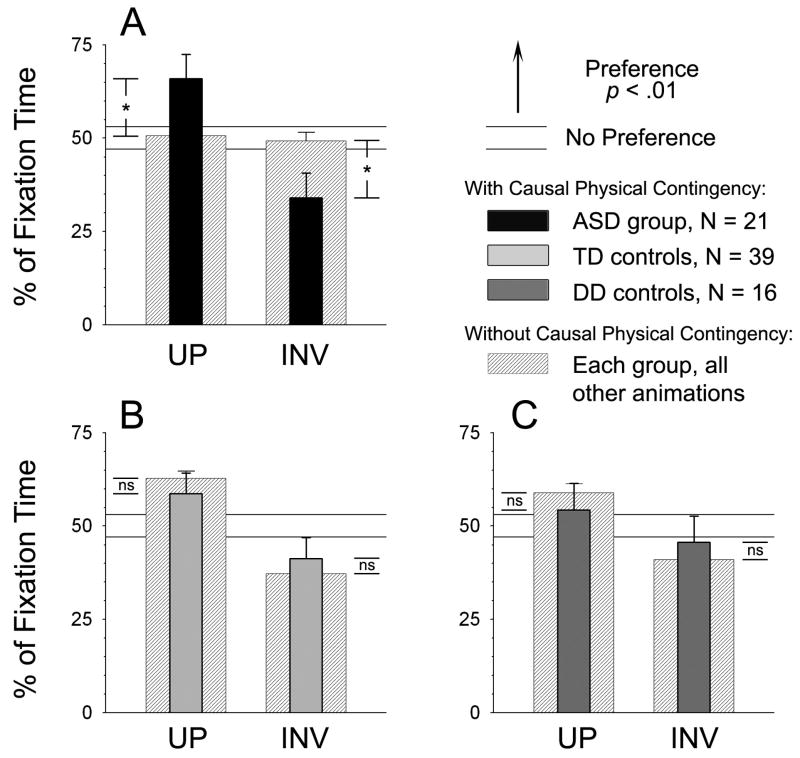Figure 2.
When the animation contains a physical contingency, two-year-olds with autism do show significant viewing preferences. (A) During other biological motion animations, ASD toddlers show no preference; but when a physical contingency is present on the upright side, these toddlers show significant preference for the upright figure: different from chance (p < .01), and different from their viewing behavior to other animations (p = .044). While other animations presented only moving point-lights and human voice, one type of animation contained an additional cue: as two point-lights, representing the actor’s hands, collided, the sound of clapping could be heard (playing “pat-a-cake”). The collision of point-light “hands” actually caused a noise (the clap) to occur, localized to the upright figure and absent from the inverted (the inverted figure’s movements were not synchronous with the claps). (B) TD toddlers show no significant change in preferential viewing. (C) DD toddlers also show no significant change in preferential viewing. Horizontal guidelines denote percentages not significantly different from chance. Error bars are SEM. * = p < .05. Please see Supplementary Materials for movie data.

